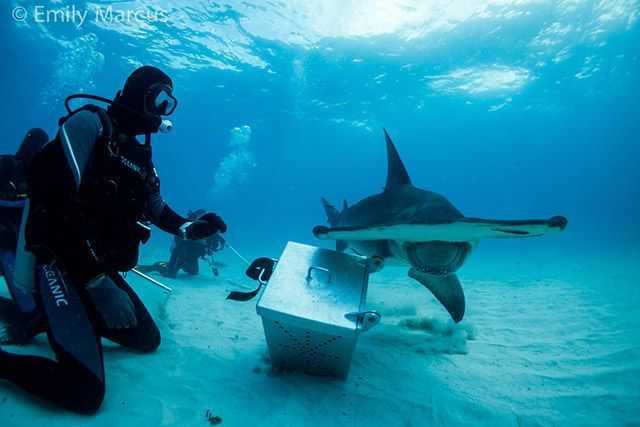
[dropcap]J[/dropcap]anuary is the official start of ‘Hammertime’ in Bimini. With the cooling of the air and water temperatures, larger species of sharks like great hammerheads and bull sharks begin to migrate into the waters around the Biminis’ in greater numbers. These larger sharks continue to pass through these waters until the warming trends of April. As long as it is done by experienced and safety oriented organizations, dives and viewing encounters can be amazing, educational, and opinion changing experiences. The largest species of hammerhead shark, the great hammerhead can reach lengths of 18 to 20 feet. Most of the hammerheads passing through Bimini range from 10 to 15 feet in length, have enormous dorsal fins, and swim with a grace and confidence only seen in apex predators.
With the cold water comes the inevitable use of wet suits this month. Only the hardiest divers and swimmers can get by without at least a full 3mm suit. For guests with thin blood or multiple long dive days planned, a 5mm suit or vest over your 3mm may be a great idea. While uncomfortable to many people, a dive or neoprene hood can work wonders. An enormous amount of body heat is dissipated through the neck and head. It also helps to make sure you have some kind of jacket or warm windbreaker to use between dives, to keep your body temperature up.
The cooler temperatures also bring in traditionally amazing visibility in the winter. One-hundred (100) feet of visibility is a usual and common day. January is also a month that larger black and Nassau grouper come up over the edge of the Continental Shelf wall to seek warmer and shallower waters. It is important to remember that Nassau grouper are spawning this time of year, and because of it season is closed for the iconic grouper. Wahoo are running up and down the edge of the walls, and can often be seen on safety stops during drift dives along the edge of the wall. All in all, January is an exciting and diverse month to explore the waters of Bimini.
